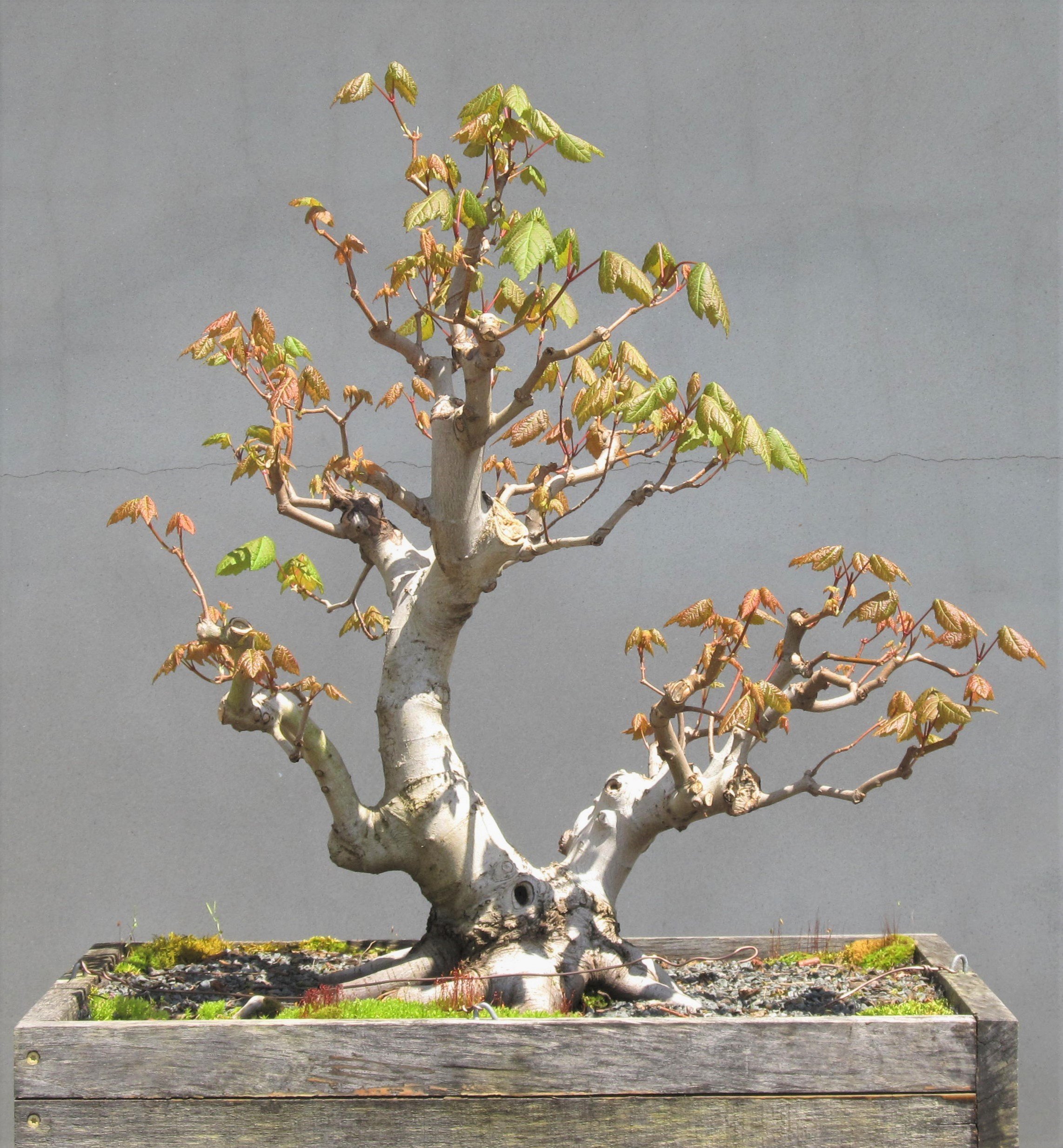Out of the Box
This week’s entry is another video, which can be thought of as a follow up to the video from last month. In that previous program we looked at collecting a field-grown specimen and introducing it to container culture by planting it in a large grow box. This time we’ll consider the next step in the tree’s journey. Last time out we were dealing with a trident maple (Acer buergerianum) and this time the subject is a native red maple (Acer rubrum). The techniques employed are the same, though.
Let’s first look at the history of the tree you will be seeing in the video. Just as with the bonsai called “Long Branch,” written about last month, this red maple was one of a large number of its kind that were started from seedlings in the late 1990s. This photograph shows a bench full of these plants in autumn of 2007:
It can be seen that the trunks of these maples are not very hefty, even after approximately a decade of growth.
Unfortunately, the story of this particular red maple gets a little sketchy at this point. It was one of the larger group growing in plastic pots, and then it was chosen to go into the ground in order to promote thickening of its trunk. The year of the planting is not known. The first images of this specific tree are from very early in 2014, showing it before and after the annual pruning administered that year:
Here is the same tree approximately fourteen months later:
March 2015 (Note attractive flowers)
A year later, in the spring of 2016, another pruning:
March 2016
April 2016
There is a process at work here: Every year in spring the tree is cut back hard, then allowed to grow unrestrained for a year. The cutting back is done based on what the tree has produced in the previous year of growth. The grower evaluates what the tree is offering, choosing what looks most promising and removing all the rest. The same design idea might not hold from year to year. Out of the new growth some new possibility might present itself, or some previous idea could be undone by what happens in the course of a year of unrestrained growth. Flexibility is necessary; the tree has some say in what it will ultimately look like.
In November of 2016 this red maple was dug up, its root ball wrapped in plastic, and taken to Raleigh, NC, to be the subject of a demonstration for the Triangle Bonsai Society. There are no known photographs documenting that program. Regrettably there are also no pictures showing what the tree looked like the first few years it spent in the grow box. The next available image shows it three years later, and the next nearly a year and a half after that:
This brings us up to date. The following video was made in the end of February, 2022:
This red maple successfully made the transition from the grow box to a bonsai pot. This was not known at the time the repotting was accomplished, and could only be verified once the plant came out of dormancy and produced a crop of healthy new leaves:
May 2022, before pruning
May 2022, after first pruning of the season (most wire was also removed at this time)











